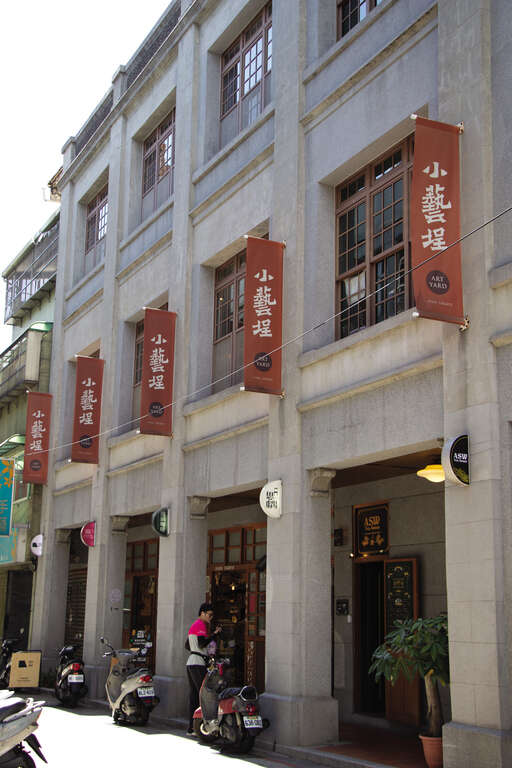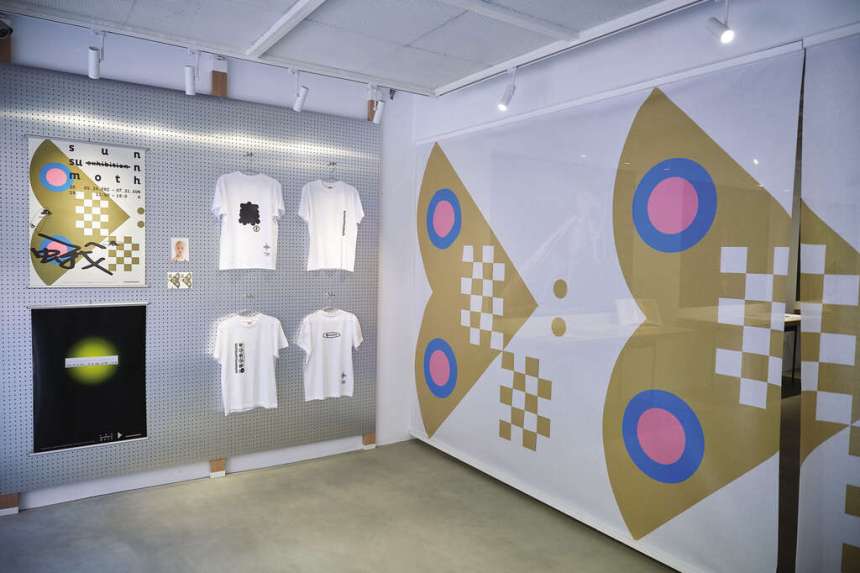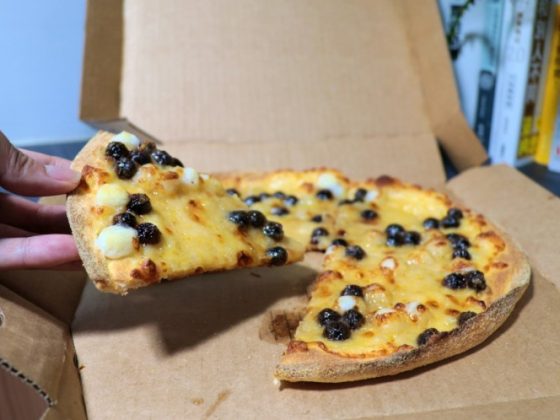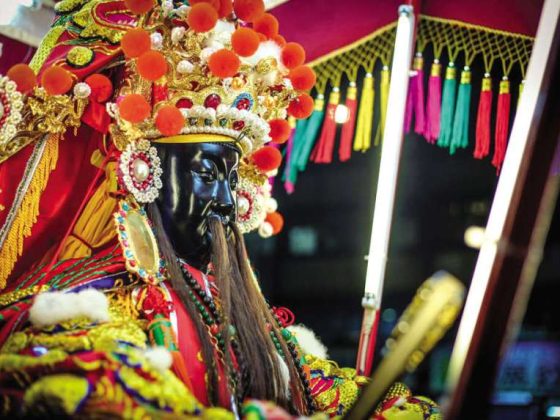WORDS BY Rick Charette
PHOTOS BY Yenyi Lin, Taiwan Scene, Department of Cultural Affairs, Taipei City Government, Taipei Art Book Fair
Let’s take a themed grand tour of Taipei using all five senses to the fullest — hearing, sight, smell, touch, and taste — with your host for the day, the publisher of the acclaimed magazine The Big Issue Taiwan Fines Lee.
Fines Lee (李取中) is a man with a vision. And to make that vision a reality, he’s a man on a mission.
His is a name equally respected within the local publishing community, the local community of charitable enterprises, and the local arts and design circle. And as days go by, with ever more members of the Taipei and larger Taiwan community uplifted by his efforts, it is a name that is becoming synonymous with the concept of “good citizen, good neighbor.” (More about arts: Celebrate the beauty of the eastern coast at Taiwan East Coast Land Art Festival)
Recently TAIPEI magazine sat down for a chat with Lee at the SUN SUN Museum (森3 SUN SUN Museum), located near MRT Nanjing Fuxing Station (捷運南京復興站). Topics covered: His vision. His mission. The community building that is at the core of The Big Issue Taiwan (大誌) enterprise. His dream to make “beauty” an intrinsic element in even the most mundane moments of his fellow citizens’ lives. His support of other creators — the SUN SUN Museum as an example — to bring the aesthetic life right into neighborhood communities. The Taipei personality and how it has changed over the past decade-plus. And Lee’s suggestions for the perfect itinerary for travelers from overseas looking to grasp the true Taipei character.

THE BIG VISION
If just a single word could be used to encapsulate Lee’s vision, it would be “community.” “Big cities are giant, busy living organisms, but life tends to be atomistic,” he says, “We tend not to interact with each other — even with the people who live right next door to us. Just like countless atoms astir, bouncing off each other at a feverish pace but with no connections established.” He wants to play a role in establishing a sense of community in Taipei and throughout Taiwan, and of caring for the other humans we come across.
Lee grew up in Tainan (台南), a city comparatively quieter than Taipei located in Taiwan’s southwest. It had a sense of community he misses. He sees great potential in Taipei, a place where a sense of distinctive character has managed to survive in many neighborhoods through the pressures of modern times. “Compare to other cities in Asia, Taipei sets no boundaries and makes anything possible.”
Extending this concept of “community” even further, Lee’s desire is to bring the beauties of life back into local communities. As the negative aspects of modern materialistic living have taken hold, the beautiful and the aesthetic have been relegated to places outside our daily existence. You make special trips to the mountains for the beauty of nature, and to big museums or theaters, for example, to see the beauty created by individuals who have chosen to make aesthetics an everyday presence in their lives. But his wish is that we bring the beautiful back into our homes and surrounding neighborhoods — as publicly performed music, plays, and other art forms were presented right outside our doors in our communities, the experiences shared with the people who live around you. He seeks to help others learn how to make the beautiful an intrinsic element in everything we do — hearing, sight, smell, touch, and taste. To see your life as a work of art in itself and, embracing the “community” world view, to care for those around you, especially those who are different from you — to see the beauty in their lives.
THE MISSION
Lee’s primary vehicle for making his vision a reality is The Big Issue Taiwan, the local version of the famed British magazine enterprise initiated by Lord John Bird and the husband/ wife team of Anita and Gordon Roddick of The Body Shop fame. On the one hand, it introduces Taiwan readers to novel ideas from the outside in lifestyle, art, culture, design, technology, and business, primarily through foreign writers resident in Taiwan.
On the other it delves even deeper into the “local community, good citizen, good neighbor” concept through its primary sales channel — selected homeless and socially disadvantaged individuals who receive training and who retain half of the cut from sales revenues. Most readers come across these sellers outside neighborhood Taipei Metro stations, the name of the magazine prominently displayed on their iconic yellow vests, baseball caps, and grey carry-bags.
THE GRAND TOUR — THE FINES LEE “TAIPEI TOUR OF THE FIVE SENSES”
TAIPEI magazine asked Fines to switch hats for a spell and serve as a travel guide for expatriates new to Taipei City and international travelers here. His task: to present a “five senses” itinerary, suggesting the best places and experiences to get to know the character of this city. Let the tour begin. (Explore Taipei on Ultimate Taipei Tour)
HEARING

“First, be sure to experience the music of Leo Wang (LEO王), an eclectic, highly-respected Taipeibased singer/songwriter. Of course, words cannot capture music properly, so consider this a tour assignment. I start with ‘hearing’ because Wang’s career and music encapsulate the Taiwan spirit. Like Taiwan’s people, his music is very iconoclastic. Creative expression elsewhere in the region is more formulaic, but in Taiwan and especially Taipei nobody stands behind you placing limitations, so you can explore your own spirit. Elsewhere there is repetitiveness, ‘false’ creativity, people staying close to trodden paths.”
Leo Wang has himself professed publicly how much he appreciates the unlimited local artistic creativity, quoted in English as saying, “Being in Taiwan is a very blessed and lucky thing. As an artist I can create whatever I want.” Lee believes the unusual openness local people have both to outside ideas and novelty generated on the island stems in large part from Taiwan’s position as a crossroads of peoples and cultural influences, and its past as a frontier land. Like the American West, the result is fierce individuality of spirit and tolerance of others.
Another prominent “hearing” phenomenon over the past decade-plus, says Lee, is the bringing of live music out from dedicated indoor venues into the community, alfresco, with everyone welcome. He especially recommends the Taipei Jazz Festival (台北爵士音樂節), one of Taiwan’s biggest annual music events. Daan Park (大安森林公園) is the one of the main venues that will be holding live concert from October 25 to 27 this year. Jazz icons, such as Jun Kung (恭碩良) and Zhang Wei Zhi (張為智), and the organizers delight in creating sparks by pairing local with international talents on the same stage.
SIGHT
“Taipei is the nationwide leader in an urban regeneration movement that has gained great momentum over the past couple of decades — the saving of heritage buildings, with the government assisting in renovating the buildings and then cultural-creative enterprises operating them, so the sites can be self-sustaining. I recommend a visit to the old Dadaocheng (大稻埕) neighborhood and especially The Great ArtYard (大藝埕) enterprises on Dihua Street (迪化街) that gives you a prime look at this movement.”
One of the brands, ArtYard 1 (小藝埕), for example, is known for urban regeneration and is located in a restored hundred-year-old building where Taiwan’s first pharmacy to import Western medicines was once situated. (Read more: Why Dadaocheng should be your first stop in Taipei)

Recently, entrepreneurs have been opening up small-scale art and design spaces right at street level, inviting local residents to drop in to see the latest in the confluence of modern art, design, and thought. The aforementioned SUN SUN Museum is a prime example.
SUN SUN Museum has taken two side-by-side street-level residences in a quiet residential neighborhood and made them into a unified open-concept exhibit space. The façade is now floor-to-ceiling glass, inviting in both sunlight and anyone who passes by. Subjects addressed in the exhibits have almost no limitations. The exhibit at the time of writing was an exploration of the beauty of moths, and an upcoming exhibit will be a joint effort with a musician who wants to celebrate the beauty that music brings into our personal lives.
Lee and The Big Issue Taiwan also support the Taipei Art Book Fair (草率季), an annual multi-day gathering which will be held from October 18 to 20 this year at Songshan Cultural and Creative Park (松山文創園區). Participants range from indie publishers to zine creators, art galleries, and art groups, with about half the stands set up by overseas enterprises. The fair, says Lee, provides much new art and design food for thought for Taiwan locals.

SMELL
“If you ask me how a visitor can get to know this city through the nose, I think of the traditional neighborhood fresh-food markets. You are immersed in daily food rituals and a sensory experience that have changed little in essence over multiple generations, though the markets now have much higher hygiene standards, brighter lighting, and other pleasantries of course. These are grand bazaars of food ingredients and prepared foods. Each is filled with scores of mom-and-pop stands, many in the same family hands for generations. I myself am a regular at Dongmen Market (東門市場).”
Back in the Japanese period (1895-1945), to better manage the city’s sprawl of street vendors, public markets were set up outside three of the city’s gates — the West, South, and East gates. Of these, Dongmen (East Gate) Market has developed a special character as the scent of the city remains old-school. The first aroma that impresses most visitors is usually the fresh smell of the morning-picked vegetables and fruits, while the seafood vendors invites the ocean breeze to every breath you take. Lee makes special visits to soothe his hankering for the handmade cilantro and minced-pork dumplings at the famed Yu Yuan Fang (御園坊) stand. The dumplings are packed frozen in a bag and Lee cannot resist the juicy smell of the gravy when boiling them for quick meal.

TOUCH
“I’m an avid jogger, and though Taipei has many attractive park spaces to run, notably Daan Park and the interconnected riverside parks, I recommend something more ‘tactile.’ Put feet to concrete and run the streets to best get to know the city’s neighborhoods.”
Over the past couple of decades, the city has been systematically widening and clearing sidewalks, creating terrific, quiet early-morning and late-evening “urban pathways” through neighborhoods, says Lee. Joggers and those on long walks can watch locals readying themselves for the new day or resting and packing up their supplies at day’s end.
Lee’s favorite route begins with a loop through tree-thick Daan Park, known as the “lungs of Taipei.” He then proceeds along Xinyi (信義路) or Renai Roads (仁愛路) to 228 Peace Park (二二八和平公園), followed by a swing by the Presidential Office Building (總統府), opened as the seat of Japanese imperial authority in 1919, beautifully lit up at night today.

Fully understanding that not everyone enjoys moving along at more than a walking pace for more than a few minutes at a time, Lee strongly recommends hitting the streets for slow-paced exploration of the city’s many distinctive neighborhoods and their dense alley webs via two other means: bicycle or motorbike. First, the city’s superb YouBike public bike rental system is the perfect facilitator for this mode of touring. As for the second means, Lee usually gets around by motorbike and dives into neighborhoods to see what makes them tick serendipitously. “This city’s youthful folk are rejecting corporate regimentation, and the result is neighborhoods bursting with owner-operated cafés, boutiques and galleries” he says. Hence, Lee highly recommends “touching” the city with a slow pace to admire its energy, as well as the personality of its countless unique and artful shops. (You might also like: Cycling in Taiwan: An Embarrassment of Riches)
TASTE
“Rechao (hot stir-fry, 熱炒) restaurants are an iconic Taiwan culinary staple. They are simple-décor neighborhood beerhouses where us Taiwanese love to gather with groups of friends. The cold beer flows and the shared stir-fry dishes begin arriving, clanked on the table by busy staff, and the mood gets ever merrier and ever louder. Taiwanese insist on the freshest ingredients in our foods; considering how fresh the ingredients are and how good the food is, the prices at these joints are incredibly low.”

Lee’s go-to spot is the well-known Lin’s Seafood (小林海產), not far from the Sun Yat-sen Memorial Hall (國父紀念館). It specializes in fresh marine catch, but rechao joints have mindbogglingly wide menus. Comfort foods such as stir-fried baby shrimp, oysters with onion, or pork neck, gives locals a chance to sit at a round table together to enjoy some quality friends and family time in the neighborhood. (Read more: Taiwan Knows Food: A Guide to Taipei’s Michelin-Worthy Night Markets)
Aside from rechao, Lee says there is nothing he likes better than sitting down at a favorite café to relax, read a bit, and observe the beauty of interaction between people in Taipei. Taipei’s non-chain operators seem to strive to make theirs a one-of-a-kind see and taste experience. He especially recommends Trio Café (三重奏) in Huashan 1914 Creative Park (華山1914文化創意產業園區), which is in fact much, much more than a café. Rather, it is a combo café, bar, and restaurant for those of more aesthetic desires.
“I trust there’s more than enough here to keep visitors busy and happy during their Taipei stay,” says Lee, “and I warmly welcome one and all interested in learning about our Taipei community — our little neighborhood in the wide world of neighborhoods.”
This article is reproduced under the permission of TAIPEI. Original content can be found at the website of Taipei Travel Net (www.travel.taipei/en).












